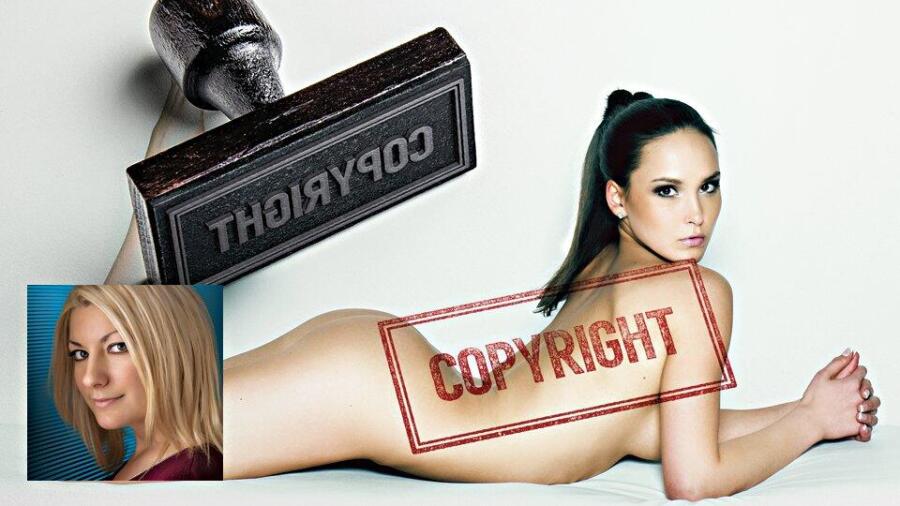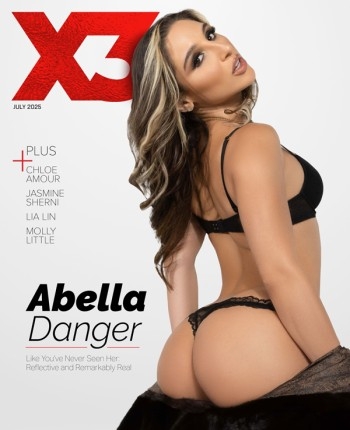Copyright protects creative works such as pornographic photos, films and clips. In order to take full advantage of this protection, you’ll need to have a basic understanding of the copyright law, what is required for registration and how to use enforcement procedures. I know this sounds really dry, but hey, it takes effort to make our wet dreams come true!
In the U.S., the basis of copyright law is found in the Constitution, Article 1, Section 8, which gives Congress the power “To promote the progress of … useful arts, by securing for limited times to authors ... the exclusive right to their respective writings.” Federal copyright laws, passed by Congress, are located in Title 17 of the U.S. Code.
If you’re very prolific, and don’t have the time or money to file for a registration on every film or photo, then at least at the end of each quarter, file on the bulk of your work that you created in that quarter.
According to those laws, copyright protection gives its owner several exclusive rights, including the right to make and distribute copies of the work, the right to prepare modified versions (formally called “derivative” works) and the right to publicly perform or display the work. If a third party does any of these things without permission of the copyright holder, it could be an infringement unless there is an applicable exception, and the copyright holder may be entitled to damages. Notorious examples are the uploading and downloading of a film to or from a tube site without the copyright owner’s permission.
Pornographic works are not exempted from eligibility for copyright protection. This was made clear in the 1979 decision of the 5th U.S. Circuit Court of Appeals in the case of Mitchell Brothers Film Group v. Cinema Adult Theater (604 F.2d 852). There, the court stated, “Obscenity law is a concept not adapted for use as a means for ascertaining whether creative works may be copyrighted. Obscenity as a constitutional doctrine has developed as an effort to create a tolerable compromise between First Amendment considerations and police power. It is an awkward, barely acceptable concept that continues to dog our judicial system and society at large.”
The court further explained that, “…[t]he purpose underlying the constitutional grant of power to Congress to protect writings is the promotion of original writings, an invitation to creativity. This is an expansive purpose with no stated limitations of taste or governmental acceptability. Such restraints, if imposed, would be antithetical to promotion of creativity. The pursuit of creativity requires freedom to explore into the gray areas, to the cutting edge and even beyond.”
So, in your pursuit of creating filmed or photographed pornography, obtaining a copyright registration from the U.S. Copyright Office will entitle you to many substantial benefits. For example, if your work is registered, you may be entitled to much higher damages than if it is unregistered in the case that someone infringes, i.e. statutory damages of up to $150,000, depending on the circumstances. You must file before a third party infringes, or within three months of publication of the work, in order to reap that benefit. This is a big deal because actual damages (such as lost sales), which you must rely on when a work is unregistered, can many times be quite difficult to prove, and are therefore, hard to collect.
A copyright application for registration requires a deposit copy of the work, some information about the work and author and a filing fee. If you’re very prolific, and don’t have the time or money to file for a registration on every film or photo, then at least at the end of each quarter, file on the bulk of your work that you created in that quarter. You can register works as “collections,” which enables the filing of groups of works together in one application. There are some downsides to doing it this way as opposed to registering each one individually, but it’s significantly better than not registering at all.
As a quick side note here, it’s important to understand that copyright is different from publicity rights. You may own a copyright on a film, photo or clip, but if there are people in them, which is just about always the case in porn, a model release of his or her publicity rights is needed in order to sell the works. Publicity rights are the rights to one’s own likeness (the way s/he looks), voice (its sound), etc. Laws relating to publicity rights vary from state to state, but in general, you must get a signed (and preferably witnessed) release from each performer in the film or photos.
In terms of copyright enforcement, if you find your film, photo or clip on a tube site, or pirated somewhere else on the web, take a look at the site’s Terms of Use for its Digital Millennium Copyright Act (DMCA) provisions. There should be a “notice and take-down” procedure in which you can notify the site’s designated agent of the offending copy, and the site should remove it.
If the website does not have DMCA procedures available or fails to follow the procedure upon proper notice from you, then the site could potentially be liable in a lawsuit for the copyright infringement, in addition to the person who actually shared or posted the content. The DMCA process is the “fast and easy” way to get infringing material removed.
If you are unable to get the content removed via DMCA procedures, or if you want to collect money damages or need an injunction, you’ll need to sue in court. Unfortunately, this can carry heavy costs and be a long process. On the flip side, however, it can be well worth it in the end if you’re successful.
In order to sue, if you don’t know the identity of the person who posted the stolen material, you’ll need to obtain their IP address from the electronic record of the offending copy. Your lawyer can then file a complaint in court against “John Doe,” noting the IP address, as the defendant. Your lawyer will then file a motion for permission to serve a third-party subpoena on the Internet Service Provider (ISP) associated with the IP address in order to ascertain the identity of the defendant. Once you’ve determined the identity and address of the defendant, the suit can move forward.
These are the basics of copyright protection and enforcement as applied to online pornographic content. Copyright law is complex, and each case is a bit different from another. Accordingly, each situation must be evaluated on a case by case basis (i.e. each time a work is pirated). Keep these items in mind though, which will lay you a great foundation to profit from your work!
Disclaimer: The content of this article constitutes general information, and is not legal advice. If you would like legal advice from Maxine Lynn, an attorney-client relationship must be formed by signing a letter of engagement with her law firm. To inquire, visit Sextech.Lawyer.
Maxine Lynn is an intellectual property attorney with the law firm of Keohane & D’Alessandro, PLLC, having offices in Albany, New York. She focuses her practice on prosecution of patents for technology, trademarks for business brands and copyrights for creative materials. Through her company, Unzipped Media, Inc., she publishes the Unzipped: Sex, Tech & the Law blog at SexTechLaw.com and the Unzipped: The Business of Sex podcast at BusinessOf.Sex.







